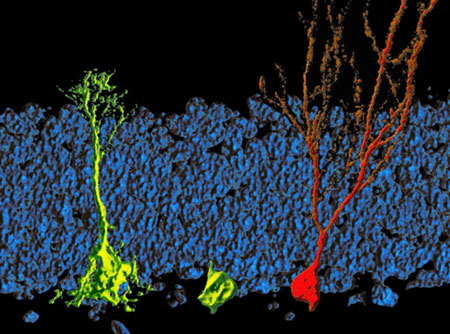 Neural stem cells in the adult brain boost their levels of lipid metabolism to grow and generate new neurons. This new finding may open novel therapeutic avenues to treat age- or disease-associated loss of brain cells.
Neural stem cells in the adult brain boost their levels of lipid metabolism to grow and generate new neurons. This new finding may open novel therapeutic avenues to treat age- or disease-associated loss of brain cells.
Dec 4th, 2012
Read more
Researchers at the University of Bonn investigate one of the oldest mysteries of plant breeding.
Dec 3rd, 2012
Read more
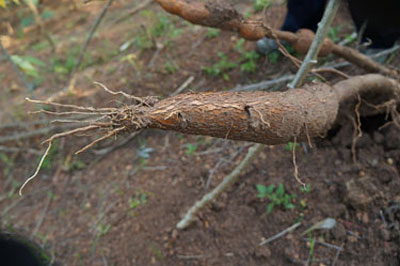 To improve the productivity of cassava - a rough and ready root crop that has long been the foundation of food security in Africa -- and plant breeding in sub-Saharan Africa, the Bill & Melinda Gates Foundation and the Department for International Development of the United Kingdom have awarded Cornell $25.2 million to host a five-year research project.
To improve the productivity of cassava - a rough and ready root crop that has long been the foundation of food security in Africa -- and plant breeding in sub-Saharan Africa, the Bill & Melinda Gates Foundation and the Department for International Development of the United Kingdom have awarded Cornell $25.2 million to host a five-year research project.
Dec 1st, 2012
Read more
The Supreme Court announced Friday it will decide whether companies can patent human genes, a decision that could reshape medical research in the United States and the fight against diseases like breast and ovarian cancer.
Dec 1st, 2012
Read more
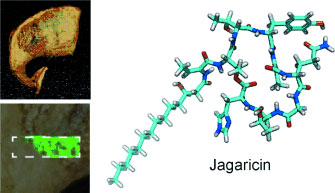 Bacterial virulence factor of mushroom soft rot identified. The substance called jagaricin could represent a starting point for the development of new antifungal drugs.
Bacterial virulence factor of mushroom soft rot identified. The substance called jagaricin could represent a starting point for the development of new antifungal drugs.
Nov 29th, 2012
Read more
By following a set of principles, scientists can produce protein molecules that previously did not exist in nature.
Nov 29th, 2012
Read more
A huge EU consortium joined forces to develop tools for managing the co-existence of genetically modified (GM) foods and conventional ones in the EU market. The traceability provided should be critical to consumer confidence.
Nov 29th, 2012
Read more
 Scientists from the United States, United Kingdom and Germany recently completed the first analysis of the bread wheat genome, one of the "big three" global crops upon which mankind depends for nutrition.
Scientists from the United States, United Kingdom and Germany recently completed the first analysis of the bread wheat genome, one of the "big three" global crops upon which mankind depends for nutrition.
Nov 29th, 2012
Read more
Serious defects in the design and methodology of a paper by S�ralini et al. mean it does not meet acceptable scientific standards and there is no need to re-examine previous safety evaluations of genetically modified maize NK603. These are the conclusions of separate and independent assessments carried out by the European Food Safety Authority (EFSA) and six EU Member States.
Nov 28th, 2012
Read more
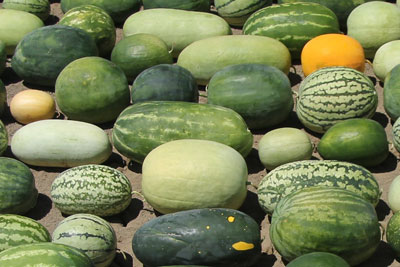 Sweeter and more disease-resistant watermelons just may be on their way, thanks to an international consortium of more than 60 scientists that has just published the genome sequence of watermelon (Citrullus lanatus).
Sweeter and more disease-resistant watermelons just may be on their way, thanks to an international consortium of more than 60 scientists that has just published the genome sequence of watermelon (Citrullus lanatus).
Nov 27th, 2012
Read more
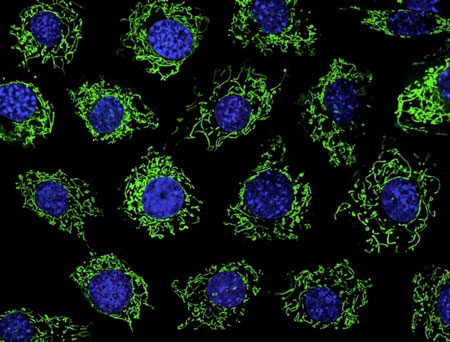 Scientists discovered last month an essential mechanism that regulates the flow of calcium into mitochondria. They found that the mitochondrial protein MICU1 is required to establish the proper level of calcium uptake under normal conditions.
Scientists discovered last month an essential mechanism that regulates the flow of calcium into mitochondria. They found that the mitochondrial protein MICU1 is required to establish the proper level of calcium uptake under normal conditions.
Nov 27th, 2012
Read more
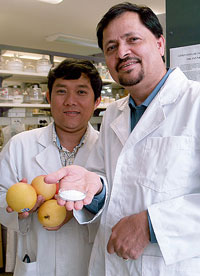 Researchers at the University of Queensland have developed a technology that will dramatically improve the safety, efficiency and effort involved in controlled ripening of fruit.
Researchers at the University of Queensland have developed a technology that will dramatically improve the safety, efficiency and effort involved in controlled ripening of fruit.
Nov 27th, 2012
Read more
Scientists at the U.S. Department of Energy's National Renewable Energy Laboratory (NREL) and the BioEnergy Science Center (BESC) combined different microscopic imaging methods to gain a greater understanding of the relationships between biomass cell wall structure and enzyme digestibility, a breakthrough that could lead to optimizing sugar yields and lowering the costs of making biofuels.
Nov 27th, 2012
Read more
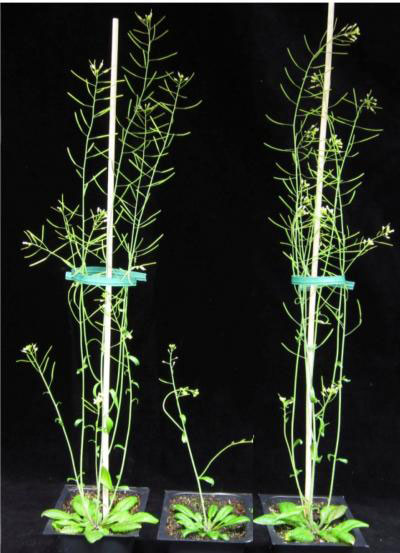 With increasing demands for sustainable energy, being able to cost-efficiently produce biofuels from plant biomass is more important than ever. However, lignin and hemicelluloses present in certain plants mean that they cannot be easily converted into biofuels. A recent study appears to have solved this problem, using gene manipulation techniques to engineer plants that can be more easily broken down into biofuels.
With increasing demands for sustainable energy, being able to cost-efficiently produce biofuels from plant biomass is more important than ever. However, lignin and hemicelluloses present in certain plants mean that they cannot be easily converted into biofuels. A recent study appears to have solved this problem, using gene manipulation techniques to engineer plants that can be more easily broken down into biofuels.
Nov 26th, 2012
Read more
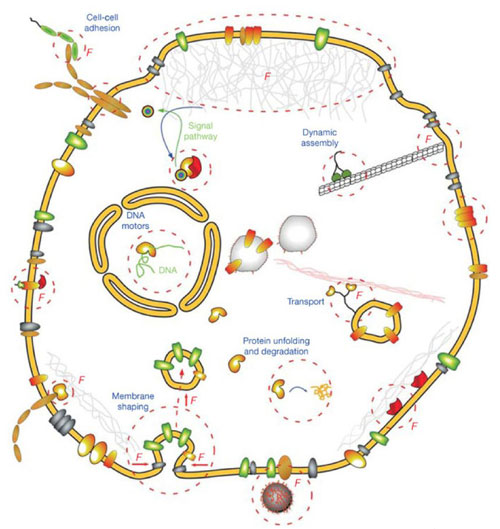 Scientists in Spain employed computational techniques to improve the characterization of proteins. The system they developed has allowed them to predict, for example, the relationship between two human proteins and telomeres, which led to their possible implication in cellular aging and the development of cancer; this awaits experimental verification.
Scientists in Spain employed computational techniques to improve the characterization of proteins. The system they developed has allowed them to predict, for example, the relationship between two human proteins and telomeres, which led to their possible implication in cellular aging and the development of cancer; this awaits experimental verification.
Nov 26th, 2012
Read more
New research has shown that these types of implants, made of a biocompatible synthetic material, are colonized within two months by neural progenitor cells and irrigated by new blood vessels.
Nov 26th, 2012
Read more
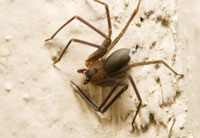 A European project investigated the effect of brown spider venom on the structure and biophysical properties of cellular membranes. By using state-of-the-art fluorescent techniques, scientists succeeded in directly visualising venom-induced changes in cells.
A European project investigated the effect of brown spider venom on the structure and biophysical properties of cellular membranes. By using state-of-the-art fluorescent techniques, scientists succeeded in directly visualising venom-induced changes in cells.
Nov 25th, 2012
Read more
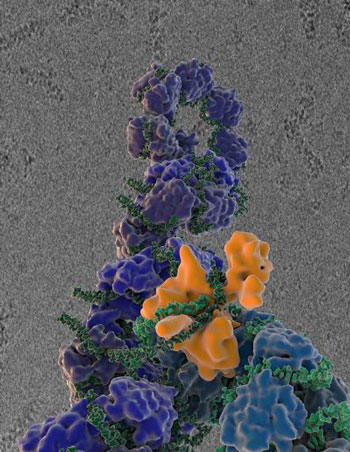 Scientists at The Scripps Research Institute (TSRI) have made a major advance in understanding how flu viruses replicate within infected cells. The researchers used cutting-edge molecular biology and electron-microscopy techniques to "see" one of influenza's essential protein complexes in unprecedented detail.
Scientists at The Scripps Research Institute (TSRI) have made a major advance in understanding how flu viruses replicate within infected cells. The researchers used cutting-edge molecular biology and electron-microscopy techniques to "see" one of influenza's essential protein complexes in unprecedented detail.
Nov 25th, 2012
Read more
 Neural stem cells in the adult brain boost their levels of lipid metabolism to grow and generate new neurons. This new finding may open novel therapeutic avenues to treat age- or disease-associated loss of brain cells.
Neural stem cells in the adult brain boost their levels of lipid metabolism to grow and generate new neurons. This new finding may open novel therapeutic avenues to treat age- or disease-associated loss of brain cells.
 Subscribe to our Biotechnology News feed
Subscribe to our Biotechnology News feed








